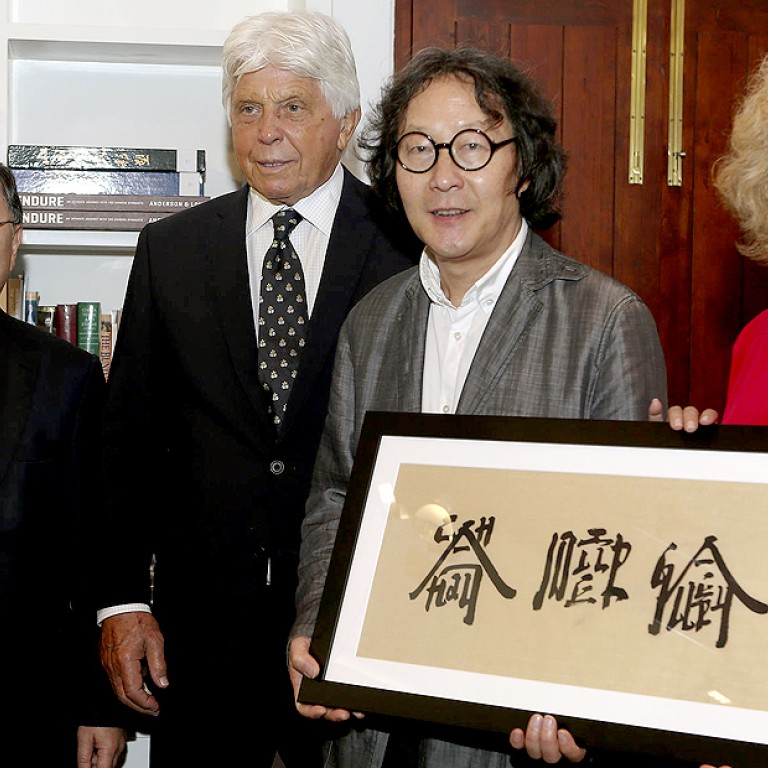
Calligraphy exhibition illustrates the beauty of Chinese culture
Artist Xu Bing says function must not replace form in the evolution of Chinese characters, as his first solo exhibition in the city opens
Function dominates the evolution of Chinese characters, but will not displace the original beauty of one of the world’s oldest forms of writing.
Beijing-based artist Xu Bing says traditional and simplified characters are both here to stay, as the two Chinese scripts serve different purposes.
The influence of the simplified script is growing, and that is inevitable, Xu says, because its fewer strokes aid learning and, by extension, communication.
“But they cannot take over the job of traditional characters,” the master of Chinese character construction said. He is in Hong Kong to present his debut solo exhibition, It Begins with Metamorphosis, at the Asia Society Hong Kong Centre.
“Function, rather the responsibility for cultural preservation, is the principle guiding the development of characters. But traditional characters are about aesthetics. They resemble a closer linkage with the roots and intrinsic beauty of Chinese culture.”
The traditional script preserves the old form of writing and is used in Hong Kong and Taiwan. Simplified characters, developed by the Beijing government nearly 50 years ago, are becoming more widely used. Their increasing appearance in Hong Kong has provided fodder for anti-mainland sentiment.
He hopes the city will preserve its uniqueness, which he says is what drives its people to produce art that cannot be found elsewhere.
“Activities such as Art Basel have put Hong Kong on the world map, and the city will produce a lot of great art as it grows out of the colonial influence to find its voice,” Xu said.
“But such great art must be derived from the unique characteristics of the city’s society, politics and culture.”
Chinese writing and characters play a significant role in Xu’s artistic creations. Born in 1955 in Chongqing, he grew up under the turmoil of the Cultural Revolution, when he produced propaganda art and calligraphy.
His most famous works include A Book from the Sky (1988-89), an installation comprising hand-printed books written with intelligible characters he created.
Another is his take on Square Word Calligraphy (2014) – English letters arranged in a square-word format to look like Chinese characters.
The latter creation, along with Xu’s first animated film installation The Character of Characters (2012), are among the 15 works on show in Hong Kong.
Visitors can also view Silkworm Book (2014) – a demonstration of the hard-working and gentle nature of Chinese people, according to its creator – though they might squirm at the dozens of live silkworms crawling over Franz Kafka’s classic The Metamorphosis as they spin a web of silk threads on the pages.
Then there is Book from the Ground, “written” with immediately recognisable icons said to be able to break down language barriers in the digital generation. With an interactive setting, it allows two people speaking different languages to communicate by typing icons instead of words.
Xu said that just like the evolution of Chinese characters, the pen had replaced the ink brush – and so would computer typing replace handwriting, inevitably.
“This doesn’t mean Chinese calligraphy will disappear. People learn Chinese calligraphy not for communication but to appreciate the uniqueness of Chinese culture,” he said. “There is a close relationship between Chinese writing and the personality of Chinese people.”
The exhibition runs until August 31.
Click on here to see Xu's Silkworm Book

